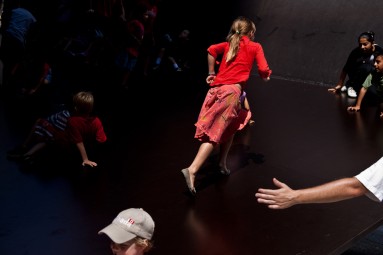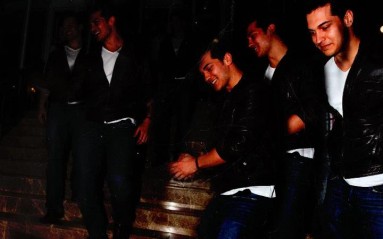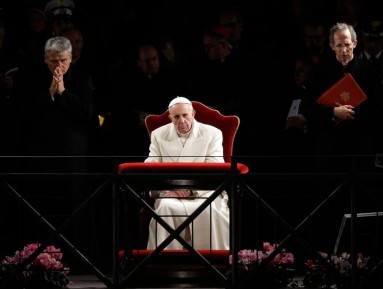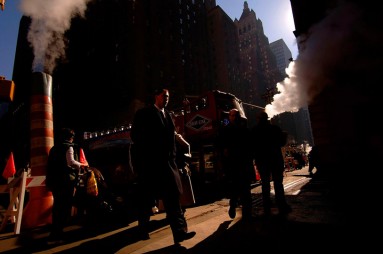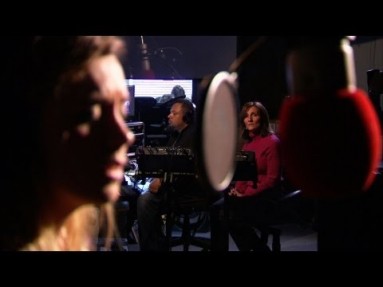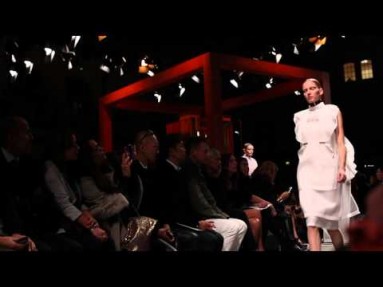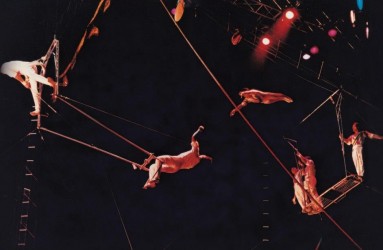“I don’t know what they are up to. They just run around taking pictures of things.” Her commitment was to ideas, or perhaps to something even more abstract than ideas. We were at a party. She was an avant-garde photographer. Photography, in her view, lived neither in the camera nor in the printed photograph, but in a more nebulous zone. Then came another round of cocktails, and she swirled away.
A dozen years from now we will enter photography’s third century. We seem to be in the moment of its fullest bloom and diversity. More people than ever take photographs, and more photos than ever are being made. Geniuses, recognized or otherwise, stalk the earth. But the art is also in its moment of crisis. There's never been so much photography on view, and most of it is bad. There is curatorial uncertainty. The kind of images celebrated by one set of institutions, say the Pulitzer Prize or the World Press Photo, are considered irrelevant and retrograde by the standards of another set of institutions, say the Deutsche Börse Prize or MoMA. Then there are those institutions that are able to contend with photography only in a nostalgic way. The scholarship of photography reflects these confusions.
This in part is a question of what presents itself as art, and what it attempts to say to its society. If photography is among the necessary forms of response to this present, photojournalism of the kind that wins awards seems increasingly inadequate to the task. A photograph of a funeral in the Middle East, a series on an austerity rally, a book of portraits of musicians: such images are important, but they rarely raise new questions. What, photographically speaking, addresses this new time, this age of clandestine assassination, torture, oppressive policing, economic immiseration, proliferating apartheids, and war without end? Or brings new light to the old questions of love, death, loneliness, beauty, and mystery? A number of photographers, only some of whom “run around taking pictures of thing,” make non-journalistic responses to our current situation.
Among these are the various artists who have appropriated Google Maps’ Street View and Google Earth, extending the practice of found imagery and the readymade to the images discovered on the computer screen. These Google-based photographic practices are forms of counter-surveillance, and in part what they do is show that a photography of ideas can accommodate different kinds of images. There are images that torment visibility, and there are images that use clarity in an ambiguous way.
The “neutral” and panoptic eye of Google itself becomes the camera, and under these conditions, the photographer’s task becomes curatorial.
Among the most interesting photographers who use Google in their work are Doug Rickard, Mishka Henner, Aaron Hobson, and Michael Wolf. Rickard’s “A New American Picture” is a look at the collapse of certain cities: Detroit, Memphis, Oakland. The gaunt sun-stunned figures in these streets inhabit noonday nightmares, captured both by Google’s car-mounted camera and by the brutal reality of American capitalism. Henner uses Google Earth to look at pixelated images of secret, usually military, locations in the Netherlands; it is a bracing update of the Dutch landscape tradition. In another project, made using Google Street View and titled “No Man’s Land,” he finds images of sex workers standing on the roadside in rural Italian locations, most of them alone, and most in broad daylight. The images are painful, poignant, but the real surprise is that there were so many to be found. Aaron Hobson, meanwhile, stitches together a number of screenshots to create ethereal panoramic photographs of unpeopled places, photos in their own way as desolate as Henner’s, but more conventionally beautiful. And Michael Wolf curates vignettes out of Street View by zooming in to find little visual poems (walking legs, high heels, people interacting with street signs) or thematic conceits (such as a series on people giving the finger to the Google camera).
Rickard, Henner, Hobson and Wolf are not alone in their creative refashioning or subversion of Google Maps and Google Earth. Other artists are doing it too, as are amateurs with the hours to spare and the desire to trawl for hours through virtual space in search of the inadvertent, the alluring, the bad, and the sad. Such conceptual artistic practices are only a tiny part of the use of Google. But the new forms of photography opened up by Google are indexical: they say something about what the company is up to, about its weird power, and about how we might elude its intentions.
Google is productive, incessant, monstrous, and very enthusiastic about itself. The company’s bright-eyed but curiously unreassuring motto is “Don’t Be Evil.” In The New Digital Age, the recent book by executive chairman Eric Schmidt and the director of Google Ideas, Jared Cohen, we find the following words: “The best thing anyone can do to improve the quality of life around the world is to drive connectivity and technological opportunity.” This might almost read as a Panglossian parody of technological optimism, were it not so earnestly meant. And so, Google grows, it makes new things, it makes the world more interesting, though not always to the good. Under the guidance of its founders and of guru-like software engineers like Jeff Dean and Sanjay Ghemawat, it brings abstractions and a whole new level of automation into computer science, and helps sustain our current age of frenzied information collection, massive computation, and feral capitalism.
Google tried to do everything. It proved itself the deepest and fastest of the search engines. It stomped the competition in email. It made a decent showing in image hosting, and a good one in chat. It stumbled on social, but utterly owned maps. It swallowed libraries whole and sent tremors across the copyright laws. It knows where you are right now, and what you're doing, and what you'll probably do next. It added an indelible, funny, loose-limbed and exact verb into the vocabulary: to google. No one "bings" or "yahoos" anything. And it finishes your sen...
All of a sudden, one day, a few years ago, there was Google Image Search. Words typed into the search box could deliver pages of images arrayed in a grid. I remember the first time I saw this, and what I felt: fear. I knew then that the monster had taken over. I confessed it, too. “I’m afraid of Google,” I said recently to an employee of the company. “I’m not afraid of Google,” he replied. “Google has a committee that meets over privacy issues before we release any product. I’m afraid of Facebook, of what Facebook can do with what Google has found. We are in a new age of cyber-bullying.” I agreed with him about Facebook, but remained reassured about Google. The Google privacy committee had given the thumbs up to predictive text of all kinds, to data mining, and to the collection of location information. It had a conciliatory relationship with bad governments at home and abroad, governments who might demand strategic pieces of stored information, or the heads of dissidents.
And all of a sudden, one day, much more recently, there was Google Search By Image (no prizes for whomever named it). Somewhere deep in the thousands of parallel machines running searches, an algorithm had emerged for matching an image to exact and inexact versions of itself across the web. This makes it sound mystical but in actuality there were precursors to Search By Image—sometimes called Reverse Image Search—at Google itself, and at TinEye. Research in the last decade into object recognition and into the matching of visual data (research done not only at Google but at other corporations and at universities; see for example the work of Abhinav Gupta and Abhinav Shrivastava) was brought to a point of refinement, incorporating findings about how to estimate the relative importance of different parts of a picture. And, in time, sophisticated code that made use of artificial intelligence was written, by a team led by Amit Singhal and Ben Gomes.
So, the science was straightforward (though not simple) but the result was mystical: faces and places and scenes were legible in a new way, shorn of their mute anonymity. A photograph—say the famous one of a child carrying bottles by Henri Cartier-Bresson ("Rue Mouffetard, 1954"), or a tourist’s snapshot of her family in front of the Taj Mahal—could be pinned to the world in a precise way. If not, if it were a unique image of a situation or of an unremarkable location, it could be brought into the family of images. This latter, a more involved and more interesting technical feat than mere matching, was presented as pages of “visually similar images.” This use of visual similarity had a formal and coloristic sophistication that took me aback: it seemed to demonstrate an awareness of the essence of a photograph. Light, shadow, color, intensity, and composition were integrated to unite images that were similar. These were images that shared a kind of visual DNA, the kind that is apparent at a glance. But the images were not at all related to each other in terms of content. And, once again, I felt fear, though this time, whether it was fear of God or of Google, or whether there was a substantial difference between the two, I could no longer say.
In Naples in 1868, Vittorio Imbriani published a pamphlet entitled La quinta Promotrice. In this now almost forgotten text, he advanced a peculiar theory of art that centered on the color patch or, in Italian, the macchia (the word literally means stain or spot). According to Imbriani, the macchia is “the image of the first distant impression of an object or a scene, the first and characteristic effect, to imprint itself upon the eye of the artist.” It is, in other words, the total compositional and coloristic effect of an image in the split second before the eye begins to parse it for meaning. Imbriani was writing against the academic idealists of his time, who were obsessed with categories of style and execution. “Every painting must contain an idea,” Imbriani wrote, “but a pictorial idea, not just a poetical idea.” And for him, this pictorial idea was a matter of “a particular organization of light and dark from which the work takes its character. And this organization of light and dark, this macchia, is what really moves the spectator... Equally in music it is not the attached words, the libretto, but the character of the melody that produces emotion in the listener...”
Imbriani’s was an argument for the inner life of pictorial effect, not so much about the way in which visual organization transcended subject matter, but the way in which it preceded subject matter. For Imbriani, a picture lived by its idea, by its melody. However, this wonderful and cogent theory gained little traction, and with the exception of a reconsideration by Benedetto Croce in 1929 and an adaptation by Hans Sedlmayr (who misunderstood Imbriani’s main argument) in 1934, it never really entered the mainstream of art history.
I love conceptual photography but I also like to “run around taking pictures of things.” I am now using Search By Image for my own personal color studies, for my own understanding of the color patch, and I don’t know what might come of it. I’m watching to see what other photographers and artists can create using this latest manifestation of Big Data. As usual, they will have to navigate between the Scylla of copyright issues and the Charybdis of “that’s bullshit, not art.”
In my eight years of struggle as a street photographer, I had stumbled across Imbriani’s truth without knowing it: in each picture, I was building on a pictorial rather than poetic idea. The same, I feel, is true of some of the color photographers I admire most: Saul Leiter, Boris Savelev, Alex Webb, Gueorgui Pinkhassov. Lee Friedlander, in black and white, pursued the same thing, with staggering sophistication. This is what has drawn me to them. (To others, like Dayanita Singh, Helen Levitt, or Joel Meyerowitz, I've been drawn by other qualities.)
When I began to put some of my photographs into Google’s Search By Image, it was like an arrival. This was work I had thought of in terms of a certain disregard for subject matter. I had a passion for light and shadow, a tendency towards ostinato patterns, and an almost fanatical interest in color distribution. In introducing images to one another (as I did in a previous project I called Who’s Got the Address?) I was working with a notion of reuniting what had been shattered in some unseen pictorial prehistory. At other times, I had even organized some of my images by color kinship: the red and black ones in one group, the blue-green ones in another. But I did not understand fully that what I was after were macchie. This is what became clear when I gave myself over to Search By Image.
I fed a few of my photographs into the machine (there's a warning on the support page: “When you search by image, any images that you upload and any URLs that you submit will be stored by Google. Google uses those images and URLs solely to provide and improve our products and services”), and out of the “visually similar images” results, I selected the ones that best expressed the idea I had been after when I took the original picture. The photographer’s task not only becomes curatorial, it has in fact always been curatorial. In each case I ended up with an assemblage of nine images, including my own original (I did four such macchia studies, and the full collection of images is here—click on each to enlarge). I had arrived at Google’s macchia and, beyond that, unanticipated narratives. An out of focus picture of a woman with a hijab was now surrounded by her color patch relatives: a fighter jet, Bill Maher being conspiracy weary, President Obama in front of some computers, a lone rioter, a woman wearing the opposite of a hijab, a policeman confronting what seemed to be, in the distance, a group of women in black hijabs.
Another photo of mine, an adumbrated red image of the interior of the Musée d’Orsay (the photograph at the very top of this essay) led to unexpected prodigies of vision (the eight photos that follow). To my original were responses in the form of a fashion show, the new pope (seated like Don Corleone, flanked by consiglieri), North Korean acrobats, a New York City street, and a night raid. The pictorial idea of each picture told me what I knew but hadn’t articulated about the pictorial idea of my own picture, its rhetoric of red and shadow and scatter. It was like hearing a familiar tune played on unfamiliar instruments, with dramatic changes in the timbre but the pitches staying the same.
It was an uncomplicated experiment, not an attempt to create a new work of art. But I could see that there was potential there, perhaps not for me, but surely for others who might want to think through the capabilities of Google Image or Google Search By Image. Machine had once again met Mind, and Machine knew of Mind what Mind itself had not known. The totalizing information monster was backlit, looming, and breathing heavily. The monster had its own ideas. But in the shards of light flashing off its silhouette were also, as usual, new possibilities for art, new light for the soul.

